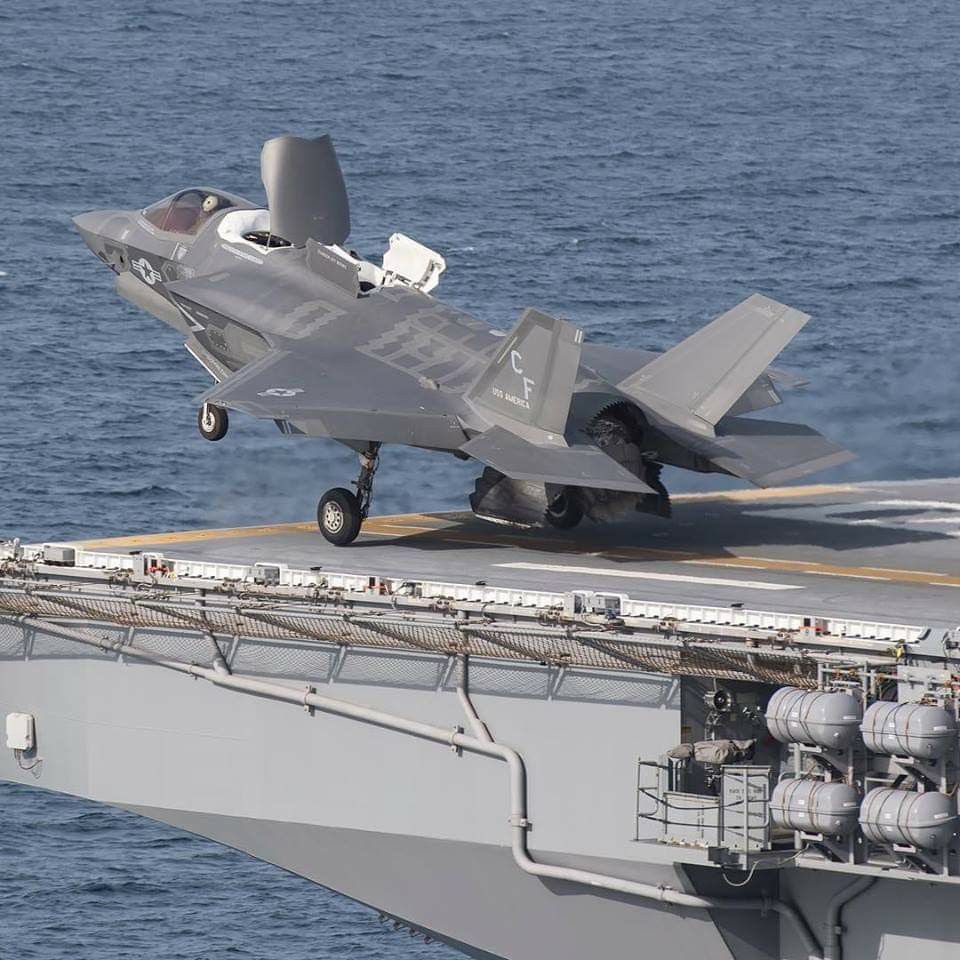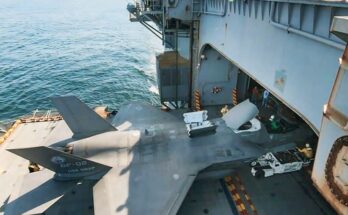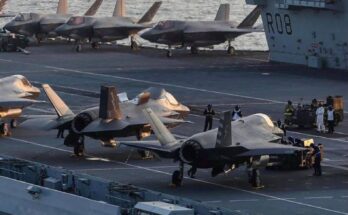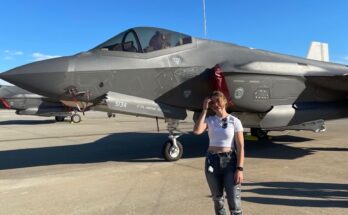
The F-35B Lightning II is one of the most advanced fighter aircraft in service today, designed to combine stealth, speed, and versatility in a single platform. Built by Lockheed Martin as part of the Joint Strike Fighter program, the F-35B is the short takeoff and vertical landing (STOVL) variant of the aircraft. This unique capability allows it to operate from shorter runways and amphibious assault ships, giving armed forces unmatched flexibility in deploying air power.
One of the defining features of the F-35B is its ability to hover and land vertically. This is made possible by a shaft-driven lift fan system located behind the cockpit, coupled with a swiveling rear exhaust nozzle. Together, these systems redirect thrust downward, enabling the jet to take off from short decks and land without the need for a traditional runway. This makes the F-35B especially valuable to navies and marine forces that rely on carriers or assault ships with limited space.
Like its F-35A and F-35C counterparts, the F-35B is built around stealth technology. Its design minimizes radar signatures through carefully angled surfaces, internal weapon bays, and advanced coatings. This allows pilots to enter contested airspace with a much lower risk of detection. The aircraft’s stealth profile is further enhanced by its ability to carry a variety of precision weapons internally, ensuring that its low observability is not compromised during missions.
The fighter is also equipped with cutting-edge avionics that give pilots unparalleled situational awareness. The Distributed Aperture System (DAS) provides a 360-degree view of the battlespace, while the advanced radar and sensor fusion technology allow data from multiple sources to be presented in a clear, intuitive way. Combined with the pilot’s helmet-mounted display system, which projects critical flight and targeting information directly onto the visor, these systems create a highly effective combat environment.
Performance is another strength of the F-35B. It can reach speeds of Mach 1.6 and has a combat radius of more than 800 kilometers, depending on mission profile. While it is not the fastest jet in service, its blend of stealth, agility, and advanced electronics makes it highly effective in both air-to-air and air-to-ground roles. It is capable of carrying precision-guided bombs, air-to-air missiles, and advanced stand-off weapons, giving commanders a wide range of options in combat scenarios.
The F-35B has been adopted by several nations, including the United States Marine Corps, the Royal Navy, and the Italian Navy. Its ability to operate from smaller carriers, such as the UK’s HMS Queen Elizabeth, provides a cost-effective way to project fifth-generation air power without requiring a full-sized nuclear-powered carrier. This makes the aircraft particularly attractive to nations seeking advanced capabilities while balancing budgetary constraints.
Despite its strengths, the F-35B has faced criticism over cost and complexity. Development delays, high maintenance requirements, and concerns over long-term sustainment have sparked debate. However, proponents argue that its combination of stealth, advanced sensors, and STOVL capability makes it indispensable in modern warfare.
In sum, the F-35B Lightning II represents a leap forward in aviation technology. With its ability to take off from short decks, evade detection, and deliver precision strikes, it has redefined what a fighter jet can achieve in both land and naval operations.


